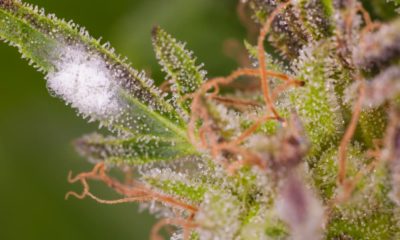Anyone who’s ever tried to grow their own weed knows that it takes more than just planting some seeds and watching them bloom. Many complications may arise during the growth process, and sometimes, these eventualities can stick to the final product in the form of toxic residue. Other times, negligence in the growing process itself can result in different forms of toxicity. Either way, both have left harmful substances in tainted weed products.
As the market expands and legislation grows tighter, regulations for lab testing will become harder to dodge, and we might see the day when every single item sold at dispensaries nationwide, is free from any harmful substance. However, at this particular time of unmeasured industry growth, producers and dispensaries trying to cover the newly found demand, have been known to sell cannabis products containing some form of unhealthy substances.
Tainted Weed Products in California
As it recently became public, over 80% of California’s legal pot found at dispensaries was tainted with some kind of harmful substance.
The good news is, if you ever bought weed from a black market dealer, chances are you’ve already inhaled quite a few potentially harmful substances, and lived through the experience. Even in the worst-case scenario, legal weed is bound to contain less toxic elements than black market weed, because it follows some kind of regulation. Still, recent lab testing in different states shows some dispensaries’ products can bring more than just the occasional paranoia.
A recent report claimed nearly 90 percent of illegal cannabis farms use toxic pesticides.
In a recent article we went over the 7 harmful pesticides most commonly found in cannabis products, but though pesticides are one of the main sources of toxicity found in commercial cannabis, there’s still more dirt hiding behind the smoke curtain.
Bacteria
A recent study of samples from 20 North California dispensaries showed the presence of Escherichia coli, Klebsiella pneumoniae and Acinetobacter baumannii bacteria in tested flowers. These bacteria are known to cause serious infections in the gastrointestinal and respiratory systems. Also, they are a special threat to immunosuppressed patients using weed as a pain relief.
Fungi
Dispensaries are usually more worried about testing their samples for potency rather than contaminants, which is why the Cryptococcus, Mucor, and Aspergillus fungi contained in some of the same samples wasn’t found until the study was conducted, which happened after some cancer patients who were also medical marijuana users, developed lung infections.
Mold
Though mold growth is a naturally occurring phenomenon, and not a particularly worrying one, when its found in large amounts, it can lead to health complications in the respiratory system. Recent finds in lab tests conducted on samples taken from Arizona dispensaries show mold contamination on commercially distributed flower buds. Although there’s no specific agreement between scientists on how much mold is considered a threat, the findings have been linked to cases of contracted pneumonia on medical marijuana patients.
Residual Solvents
To be able to produce dabs, there’s an invariable need of some kind of solvent, to separate the cannabinoids that make up the concentrate. The most common is butane, which is later cleaned from the finished product after its use, to produce a pure dab. However, the same tests that showed the presence of bacteria and fungi in California’s dispensary products, showed that 10% of the samples had more residual butane than allowed by state law. Although it takes a big amount of butane to cause heavy symptoms like drowsiness, its consumption is still not recommended by any doctor.
Heavy Metals
Even if you like to rock to some Iron Maiden classics when you light up, metals like arsenic, cadmium, mercury and lead aren’t good for you. The presence of such metals can even occur in the most hygienic farms and under the best growing practices because they don’t come from applied substances, but from the location’s soil, water and air.
Although a standard small amount of these metals is expected from any cannabis sample, there’s a growing concern around a possible rise in the presence of these accumulated cancerous metals, as more and more land starts to be used for growing weed.
It’s fair to point out that California, where most of the worrying evidence turned up, is on its way to straightening up its act, by enforcing multiple toxicity tests on weed samples before they hit the dispensaries.
However, we expect a bumpy ride in the next few years as new states hop on the legalization bandwagon and take their time to develop comprehensible policies regarding the production of safe commercial weed.

















